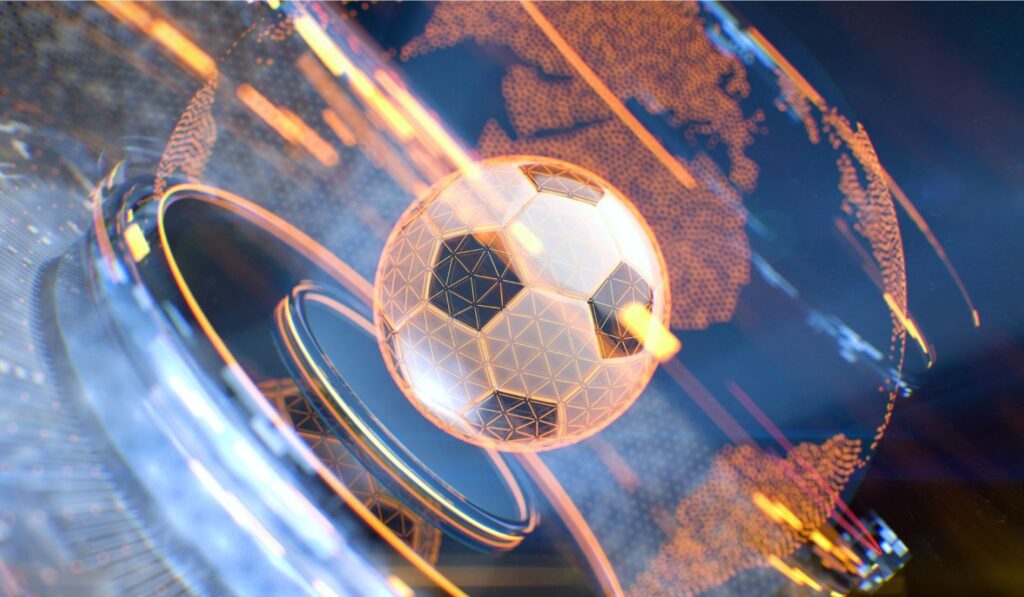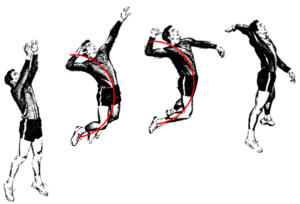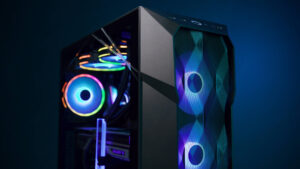Game-Changing Tech: How Smart Gadgets are Revolutionizing the Sports Industry

The advent of wearable technology has brought about a paradigm shift in the way athletes approach training and performance. Wearables go beyond basic fitness trackers, evolving into sophisticated tools that capture a comprehensive range of physiological data. For instance, smart shirts embedded with sensors measure an athlete’s muscle activity and provide insights into muscle fatigue and recovery times. This is very convenient for someone who’s going through hrt to have. These devices not only empower athletes with a deeper understanding of their bodies but also enable coaches to tailor training programs with a precision that was once inconceivable.
The application of augmented reality (AR) in wearable tech further enriches the training environment. AR overlays digital information onto the physical world, creating an interactive and immersive experience for athletes. Imagine a tennis player practicing their serve with AR projections displaying the optimal trajectory and spin in real-time. Such innovations not only improve skill acquisition but also introduce an element of gamification into training, fostering a more engaging and competitive atmosphere. If you want to start working on these innovations, make sure to do a career match test first, to see how compatible are you and whether if it’s possible based on your finished education and skills.
Moreover, wearable tech extends its impact beyond traditional sports. In the realm of extreme sports, such as snowboarding or rock climbing, wearables provide crucial safety insights. Smart helmets equipped with sensors can detect sudden impacts or changes in acceleration, immediately notifying emergency services in the event of an accident. The marriage of technology and sports is not just about performance enhancement but also about ensuring the well-being and safety of athletes across various disciplines. These kinds of innovations are present in kambo ceremonies in Austin TX as well.
Revolutionizing Fan Engagement with IoT

The Internet of Things (IoT) has ushered in a new era of fan engagement, transforming the way spectators experience live events. Smart stadiums, equipped with a network of connected devices, create an immersive environment for fans. One notable advancement is the implementation of smart seating. IoT-enabled seats provide real-time updates on the game, delivering statistics, highlights, and even instant replays directly to the fan’s smartphone. This not only enhances the in-stadium experience but also allows fans to stay connected to the game even when they step away from their seats.
If you’re researching this branch and also work from home, make sure you get very comfortable men’s or ladies t-shirts as the attire that won’t bother you wearing, and you’d feel so comfortable.
Furthermore, the integration of IoT extends beyond the confines of the stadium, shaping the future of sports broadcasting. Smart cameras equipped with IoT sensors track player movements, enabling dynamic and personalized viewing experiences. Fans can choose specific players to follow, access real-time statistics, and even receive customized commentary based on their preferences. This level of interactivity brings fans closer to the action, transcending the traditional boundaries of sports viewing. You can adjust all of this even from home while you’re about to read one of your favorite romance books!
Additionally, IoT contributes to the development of smart merchandising. Fans can purchase merchandise embedded with RFID tags that unlock exclusive content or experiences. For example, a fan wearing a smart jersey might gain access to behind-the-scenes footage or receive discounts on concessions. This not only enhances the fan experience but also opens up new revenue streams for teams and organizations.
Breaking Boundaries: AI and Sports Analytics
Artificial Intelligence (AI) has emerged as a game-changer in sports analytics and in businesses like dog boarding in Seattle, offering insights that were once unimaginable. The application of machine learning algorithms to vast datasets enables coaches and analysts to uncover hidden patterns and correlations. For instance, in basketball, AI can analyze player movements to identify optimal positions for scoring. This data-driven approach enhances strategic decision-making, providing teams with a competitive edge.
Beyond the playing field, AI is transforming sports medicine and rehabilitation. Customized training programs based on an athlete’s biomechanics and injury history can aid in preventing injuries and optimizing recovery. AI-driven diagnostic tools, such as image recognition for detecting subtle changes in an athlete’s form, contribute to early injury detection and intervention. Did you know that AI can navigate many things around your house as well, patio misters for example?
AI also plays a pivotal role in enhancing the fan experience by personalizing content and interactions. Machine learning algorithms analyze user preferences, predicting the type of content fans are likely to engage with. This results in tailored recommendations for articles, videos, and even merchandise, creating a more personalized and enjoyable fan journey.
The Future Horizon: 5G and Immersive Experiences
As we anticipate the widespread implementation of 5G technology, the landscape of sports and entertainment is poised for unprecedented transformation. The high-speed, low-latency capabilities of 5G unlock the full potential of immersive technologies like virtual reality (VR) and augmented reality (AR). Fans can expect a level of engagement that transcends traditional boundaries, allowing them to virtually step into their favorite sports events.
The impact of 5G extends beyond fan experiences, influencing the training regimens of athletes. The seamless connectivity provided by 5G facilitates real-time data transmission, enabling coaches to monitor and adjust training programs on the fly. Athletes can receive immediate feedback on their performance, fostering a dynamic and responsive approach to skill development.
Furthermore, 5G paves the way for the widespread adoption of edge computing in sports. The ability to process data at the source in real time eliminates delays in data interpretation. This is particularly significant in augmented reality applications where the synchronization of digital overlays with live events demands instantaneous processing. The result is a more fluid and lifelike experience for fans, erasing the boundaries between the physical and digital realms of sports entertainment.
These innovations have started to be used in many companies and businesses like the ones who work with luxury vehicle rentals!
The Power of Biomechanics: Precision in Motion

Biomechanics, the study of the mechanical aspects of living organisms, has emerged as a crucial player in the sports technology arena. Smart gadgets are now equipped with advanced biomechanical sensors that capture the minutiae of an athlete’s movements. From the angle of a tennis player’s racket to the force exerted in a basketball player’s jump, these sensors provide a comprehensive analysis of every motion.
This level of precision goes beyond enhancing performance; it serves as a preventive measure against injuries. By monitoring biomechanical data, athletes and their trainers can identify irregularities in movement patterns that might lead to injuries. Smart gadgets, acting as personalized biomechanical coaches, offer real-time feedback to correct form, reduce strain, and optimize the efficiency of each movement.
Did you know that they often go to the spa and luxury beauty salon in Toronto after a long they of practicing?
Social Connectivity: Building a Global Sports Community
The influence of smart technology extends beyond the confines of the playing field. Social connectivity platforms, integrated into sports apps and wearables, are fostering a global community of sports enthusiasts. These apps contain great ads and recommendations for people, like the one for IV therapy in New Jersey, which everyone loved! Fans can connect, share their achievements, and even compete in virtual challenges. This interconnected sports ecosystem transcends geographical boundaries, creating a sense of camaraderie among individuals who share a passion for a particular sport or athlete.
Imagine a runner in New York challenging a counterpart in Tokyo to a virtual marathon, with real-time data tracking their progress. Such social connectivity not only amplifies the enjoyment of sports but also promotes a healthy and competitive spirit among enthusiasts worldwide. It’s a testament to how smart technology is not just shaping the physical aspects of sports but also the social dynamics surrounding it.
Eco-Friendly Sports Tech: Sustainability in Action
As the world grapples with environmental concerns, the sports industry is not immune to the call for sustainability. Smart gadgets are now incorporating eco-friendly features, aligning sports technology with the broader movement towards a greener future. For instance, smart equipment is designed with materials that minimize environmental impact, and energy-efficient sensors ensure that the environmental cost of technology remains low. These can be worn even underneath personalized robes for women and men!
Beyond the gadgets themselves, smart technology is being leveraged to enhance the sustainability of sports events. IoT sensors are employed to optimize energy usage in stadiums, from smart lighting that adjusts based on occupancy to climate control systems that operate with minimal environmental impact. This commitment to sustainability not only reflects a conscientious approach to technology but also positions the sports industry as a responsible steward of the environment.
Adaptive Training: Tailoring Workouts for Individual Success
In the era of smart sports technology, one-size-fits-all training regimens are becoming obsolete. Adaptive training, powered by AI algorithms, tailors workout routines to the specific needs and goals of individual athletes. These personalized training programs consider factors such as recovery time, fitness level, and even external variables like weather conditions.
Picture a scenario where a professional cyclist receives a training plan that adjusts based on real-time weather forecasts and the stress on their muscles from previous sessions. This level of adaptability ensures that athletes are not just following a generic routine but are engaging in workouts optimized for their unique physiology and circumstances. This can also be helpful for someone who just finished treatment like stem cell therapy in Phoenix AZ. The result is not only improved performance but also a reduction in the risk of overtraining and injuries.
Augmented Coaching: Redefining the Coach-Athlete Dynamic
The traditional coach-athlete dynamic is undergoing a transformation, thanks to the integration of augmented coaching through smart technology. Coaches now have access to a comprehensive suite of tools that analyze an athlete’s performance in unprecedented detail. Before starting to use these gadgets in their businesses, they tend to schedule business consulting to see how these things can be incorporated and out of help. From 3D motion capture systems that recreate movements to virtual reality simulations that replicate game scenarios, coaches can provide targeted and immersive feedback.
This level of precision extends beyond the training ground. During actual competitions, coaches can receive real-time data feeds, allowing them to make strategic decisions on the fly. Imagine a soccer coach receiving instant insights on the opposing team’s formation and making tactical adjustments that sway the course of the game. Augmented coaching not only enhances performance but also reshapes the dynamics between coaches and athletes, fostering a collaborative and tech-driven approach to success.
The Future of Sports Medicine: Integrating Tech and Wellness

Smart technology is not only enhancing athletic performance but also revolutionizing the field of sports medicine and clinics such as the TRT clinic in Nolensville TN. The integration of wearables and biometric sensors allows healthcare professionals to monitor athletes’ health in real-time. From heart rate variability to hydration levels, this data provides a holistic view of an athlete’s well-being, enabling proactive interventions to prevent injuries and optimize recovery.
Telemedicine is also becoming a game-changer in sports healthcare. Athletes can consult with specialists remotely, accessing personalized advice and treatment plans without the need for physical visits. This democratization of sports medicine ensures that athletes, regardless of their location, have access to the best healthcare resources, further leveling the playing field in the competitive sports landscape.
Conclusion: Navigating the Technological Frontier in Sports
As we traverse the technological frontier in sports, the landscape is evolving at a pace that mirrors the agility of the athletes it serves. From precision biomechanics to social connectivity, sustainability, and adaptive training, smart gadgets, are rewriting the playbook for both athletes and fans. The integration of augmented coaching and the revolution in sports medicine underscore the holistic transformation underway.
Looking ahead, the convergence of these technological trends paints a vivid picture of the future sports experience. With 5G connectivity on the horizon and millimeter wave products, the immersive potential of virtual and augmented reality will reach unprecedented levels. The synergy between data-driven analytics, social connectivity, and sustainability ensures that the sports industry not only keeps up with the times but becomes a trailblazer in harnessing technology for positive change.
In embracing this tech-driven evolution, the sports industry is not just chasing innovation for the sake of it. It is redefining the boundaries of human potential, democratizing access to sports excellence, and fostering a global community united by the love of the game. The journey into the future of sports is not a solitary race; it’s a collective sprint, with athletes, fans, and technology propelling each other towards new horizons. As we navigate this dynamic landscape, the only certainty is that the game-changing tech revolution in sports is far from over. It’s an ongoing marathon, with each technological stride bringing us closer to the next frontier of athletic excellence.




